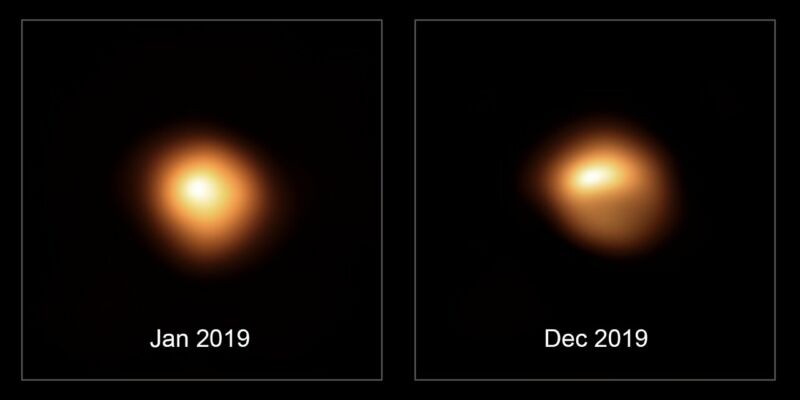A recent study confirms that Betelgeuse still has a few tens of thousands of years before it dies. This work also tells us that the supergiant is actually smaller and closer than expected.
Located in the constellation of Orion, Betelgeuse is a red supergiant at the end of its life. From a cosmological point of view, its supernova explosion is therefore "imminent", hence the interest of researchers when the star showed "signs of instability" a few months ago. Between January and March 2020, telescopes have in fact twice recorded very significant drops in its luminosity.
To explain these sudden gradations, two main explanations were then put forward. The first suggested that Betelgeuse, which is a so-called "variable" star, had simply experienced an episode of exceptional fluctuation, while the second proposed that the object, which constantly emits strong stellar winds, had emitted a large puff of gas and dust.
As part of a study, researchers from the Australian National University (ANU) have confirmed the origin of these two recently recorded episodes. "We know that the first dimming event involved a dust cloud , while the second, smaller event was probably due to the star's natural pulsations “, explains astrophysicist Meridith Joyce, the main author of this work.
The researchers also relied on hydrodynamic and seismic modeling to try to learn more about the physics behind these pulsations. Based on these analyses, it would appear that Betelgeuse is still burning helium in its core. In other words, this means that the star will not explode anytime soon. "Not for at least 100,000 years “, assures Meridith Joyce.

In addition to telling us the remaining lifespan of the red supergiant, this work also revealed that it was actually smaller than expected.>
"The actual physical size of Betelgeuse has always been a bit of a mystery. Previous studies suggested it may be larger than Jupiter's orbit “, recalls László Molnár, co-author of the study. “Our results indicate that the star actually extends only two-thirds of its way, with a radius of 750 times the radius of the sun “.
With this new knowledge in hand, the researchers were then able to determine the distance of Betelgeuse from Earth. "Our results show that it is only 530 light-years away from us, 25% closer than previously thought “, assures Dr. Molnár.
The star being positioned relatively close to the Earth, we know that its death will guarantee our descendants a great show. According to recent calculations signed by researchers at the University of California in Santa Barbara (United States), the energy released by the explosion of Betelgeuse could be equivalent to approximately ten billion times that of the Sun . It will be a blast so powerful that the star could shine as bright as a first quarter moon for at least three months.